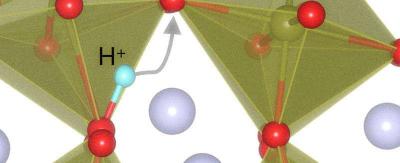Scientists at the U.S. Department of Energy's (DOE) Argonne National Laboratory, in collaboration with Brookhaven National Laboratory and three universities, have conducted a study that combined supercomputer simulation and X-ray characterization of a unique peroskite material that gradually "forgets", like the human brain, and could one day be used for advanced bio-inspired computing.

The material in the study, called a quantum perovskite, offers researchers a simpler non-biological model of what "forgetfulness" might look like on an electronic level. The perovskite shows an adaptive response when protons are repeatedly inserted and removed that resembles the brain's desensitization to a recurring stimulus.
"Eventually, it becomes harder to make the perovskite 'care' if we are adding or removing a proton," said a physicist involved in characterizing the behavior of the material. "It's like when you get very scared on a water slide the first time you go down, but each time after that you have less and less of a reaction."
As the material responds to protons that scientists add and subtract, its ability to resist an electrical current can be severely affected. This behavior allows the material to be effectively programmed, like a computer, by the proton doping. Essentially, a scientist could insert or remove protons to control whether or not the perovskite would allow a current.
Scientists may use perovskites in learning machines down the line, and may also take advantage of perovskite properties by using them as the basis for computational models of more complex biological learning systems. "These simulations, which quite closely match the experimental results, are inspiring whole new algorithms to train neural networks to learn," the researchers said.

